A Life for Thailand: Queen Mother Sirikit and her enduring legacy
The article honors the life of Thailand's Queen Mother Sirikit, who passed away on October 24, 2025, and highlights her legacy in culture, society and women's rights.
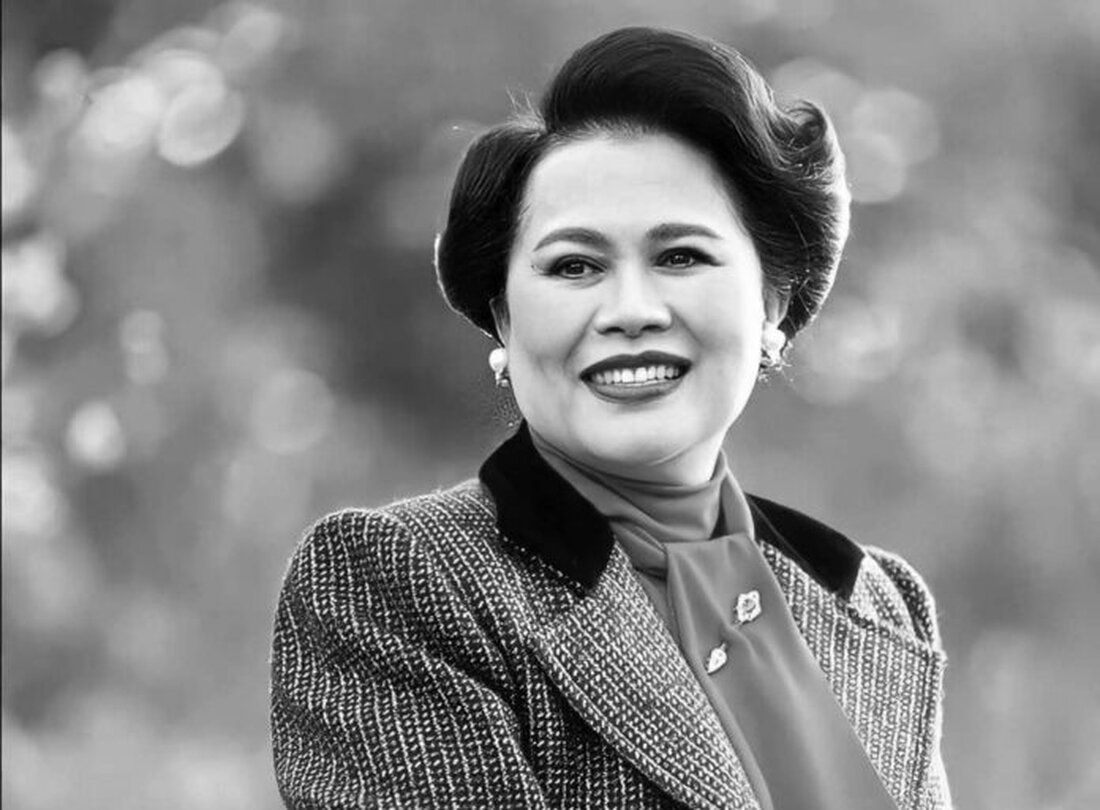
A Life for Thailand: Queen Mother Sirikit and her enduring legacy
The Thai nation mourns the loss of an extraordinary personality: Her Majesty Queen Mother Sirikit, สมเด็จพระนางเจ้าสิริกิติ์ พระบรมราชินีนาถ, who passed away on October 24, 2025. As a beloved queen and later as a revered queen mother, she captured the hearts of the Thai people for decades and left an indelible mark on the country's history and culture. Her life was characterized by dedication, grace and a tireless commitment to the well-being of her subjects. With her warm-hearted nature and her visionary work, she became a symbol of unity and strength. Dedicated to her impressive legacy that has radiated far beyond Thailand's borders, this article honors a woman who has gone down in history not just as a royal figure, but as the mother of the nation.
Life and work of the Queen Mother Sirikit
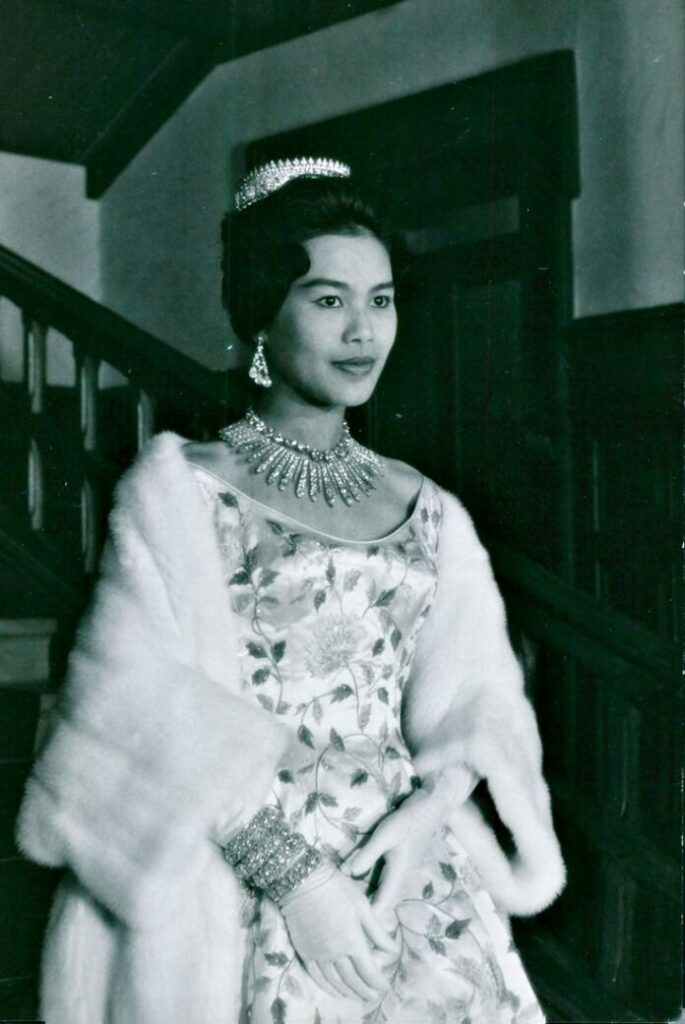
A life that is woven like a shining thread through the history of Thailand began on August 12, 1932, when Mom Rajawongse Sirikit Kitiyakara came into the world. The eldest daughter of Prince Nakkhatra Mangkala Kitiyakara and Mom Luang Bua Snidvongs, she grew up in a family deeply rooted in the country's traditions. She spent the first years of her life with her maternal grandparents before returning to Thailand with her family. Her curiosity and pursuit of knowledge were evident at an early age as she attended schools such as Rajini School and Saint Francis Xavier Convent School. She later continued her education in the United Kingdom, gaining impressive command of English and French while studying music in Paris - a passion that would remain with her throughout her life.
In the streets of Paris she crossed paths with those of the young King Bhumibol Adulyadej, an encounter that would change the course of Thai history. They tied the knot on April 28, 1950, shortly before his coronation. This union resulted in four children, including the current King Vajiralongkorn (Rama X), as well as twelve grandchildren who carry on the royal legacy. Her role as queen, which she held until October 13, 2016, was much more than a title - she became the embodiment of grace and strength alongside her husband, with whom she led the country for six decades.
Particularly notable was her appointment as regent in 1956, when King Bhumibol entered the monastery for a period. In doing so, she made history as Thailand's second queen regent and demonstrated her ability to take responsibility in challenging times. However, their commitment went far beyond political duties. Since 1956, she has served as honorary president of the Thai Red Cross and worked tirelessly for refugees and victims of natural disasters. Her humanitarian work brought comfort and hope to the most remote corners of the country and made her an indispensable support to those in need.
In addition to her social work, she also shaped the cultural landscape of Thailand in a unique way. She dedicatedly promoted Thai culture and history, whether by publishing a book in 1964 or by composing songs for the palace band. Her love of art and tradition was reflected in numerous initiatives that continue to have an impact today. Many institutions, including hospitals and parks, bear her name, as do cultural events that commemorate her legacy. Her birthday, August 12, is not only observed as a national holiday but is also celebrated as Mother's Day - a fitting symbol of her role as a caring figure for the nation. For further insights into her multi-faceted life, it is worth taking a look at her detailed biography Wikipedia.
Although health challenges, such as a stroke in July 2012, forced her to withdraw from the public eye in later years, her presence in the hearts of the people remained undiminished. Her death on October 24, 2025 at 9:21 p.m. ICT due to complications from blood poisoning leaves a painful void. But the memories of her warmth, her wisdom and her unwavering commitment to Thailand live on. Her legacy is enshrined not only in the annals of history, but also in the countless lives she touched.
The traces she left behind reach from the palaces of Bangkok to the most remote villages. She was a woman who built bridges - between tradition and modernity, between rulers and people. Her influence is evident in the values she embodied and the projects she passionately pursued.
Influence on Thai society
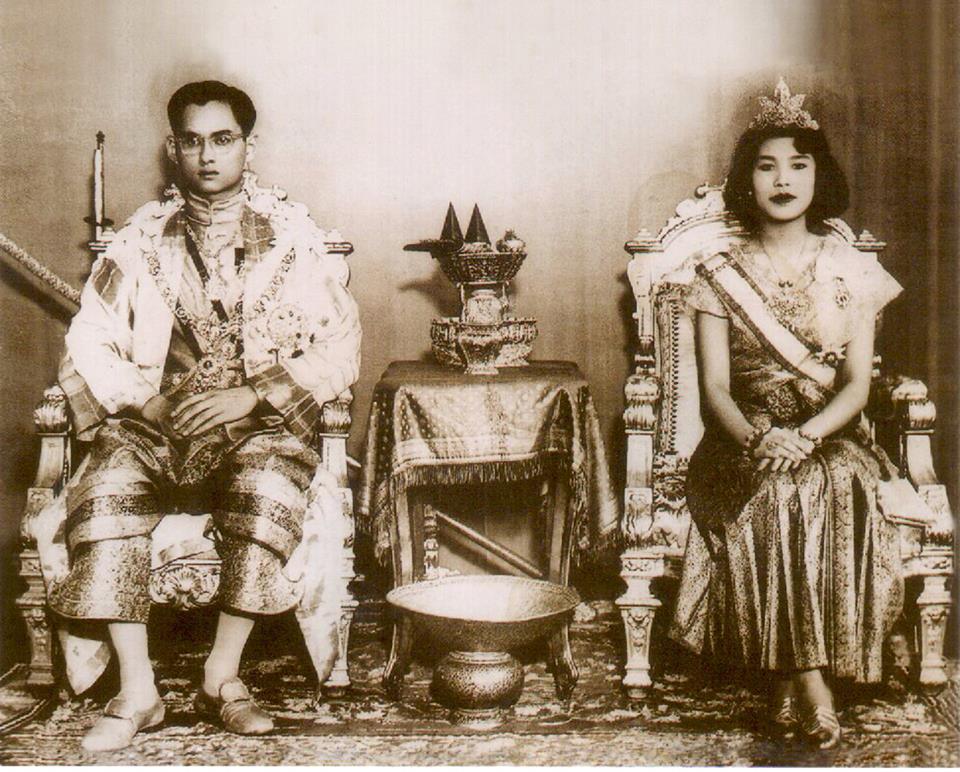
Behind the magnificent walls of the palace lay a vision that would touch the lives of the simplest people in Thailand. With an unwavering belief in the power of community, Queen Mother Sirikit dedicated herself to promoting the welfare of her countrymen. Their social projects and initiatives were not mere gestures of royal generosity, but deep-rooted efforts to effect lasting change. Her commitment to the most vulnerable in society was evident as early as 1956, when she took over the honorary presidency of the Thai Red Cross. She organized relief efforts for refugees, particularly from Cambodia, and brought comfort in times of need and despair.
Their focus was often on the country's remote regions, where poverty and a lack of resources made life difficult. By founding numerous development projects, she worked to improve the livelihoods of the rural population. She promoted craft skills, particularly traditional silk weaving, to enable women in remote villages to achieve economic independence. These initiatives, organized under the umbrella of the SUPPORT Foundation (Foundation for the Promotion of Supplementary Occupations and Related Techniques), helped preserve ancient knowledge while creating new sources of income. Their efforts helped many families not only survive, but thrive.
She also cared about people’s education and health. Their support created schools and medical facilities that provided access to basic services even in the poorest areas. Hospitals that bear her name still bear witness to her commitment to the well-being of the sick and those in need. Her work in health promotion also extended to raising awareness of important social issues, thereby raising awareness of prevention and care in society. Her ability to recognize and respond to people's needs made her an unparalleled advocate for the vulnerable.
Another concern of hers was to promote tolerance and understanding between the different communities in Thailand. She campaigned for peaceful coexistence, particularly in the south of the country, where Muslim minorities were often confronted with prejudice. Through visits and targeted projects, she showed that unity and respect are the cornerstones of a strong nation. Their efforts to celebrate cultural diversity while reducing social tensions left a lasting impression on the hearts of many. If you would like to find out more about her diverse contributions, you can find detailed information in her biography Wikipedia.
Their projects were always characterized by a deep humanity that went beyond mere charity. She sought direct contact with people, heard their stories and understood their needs. Whether it was supporting victims after natural disasters or strengthening communities through sustainable development, their hands reached far to sow hope. This closeness to the people made her not only a royal figure, but a true mother figure whose care shaped generations.
The seeds she planted through her initiatives continue to grow today. Many of the programs she created continue, serving as a reminder that true greatness lies in serving others. Their vision of a Thailand where every person has the chance for a better life remains a guiding light for future generations.
Cultural heritage and traditions
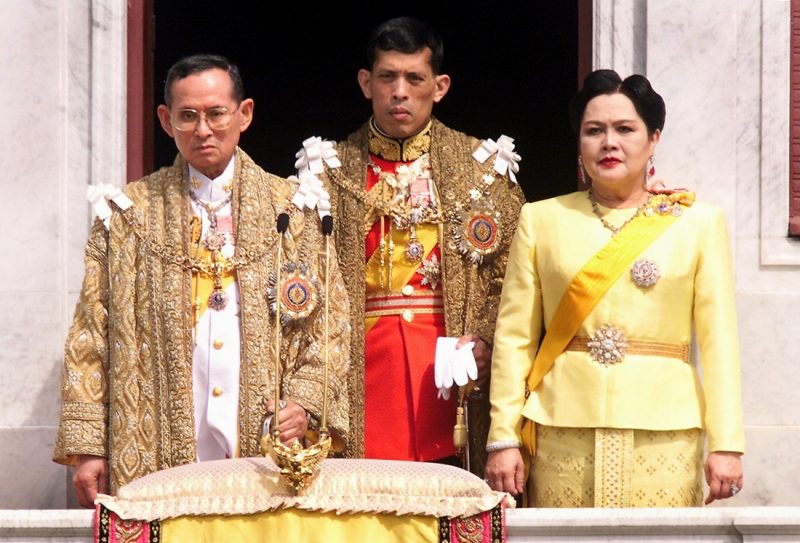
Let's imagine the gentle sounds of a traditional Thai song floating through the air as intricately woven silk fabrics shimmer in the light - an image that captures the essence of the Thai culture that Queen Mother Sirikit preserved and promoted with tireless passion. Their commitment to the country's cultural treasures was like a gentle brushstroke that brought ancient traditions into modern times. Recognizing that a people's identity is rooted in their customs, arts and stories, she made it her mission not only to protect these values but also to make them accessible to a wider audience.
One of their outstanding achievements was the revival of traditional crafts, particularly silk weaving. Through initiatives such as the SUPPORT Foundation, she encouraged women in rural areas to perfect their skills and use this art form as a source of pride and livelihood. The fabrics she promoted, often in bright colors and with delicate patterns, became a symbol of Thai elegance. She herself often wore traditional clothing such as “Chut Thai” on official occasions to emphasize the beauty and meaning of these garments and to inspire others to do the same.
With a keen sense of the meaning of festivals and rituals, she also helped cultivate important cultural events such as Songkran, the Thai New Year, and Loy Krathong, the Festival of Lights. These celebrations, deeply rooted in Buddhist beliefs and ancient customs, became even more firmly anchored in people's consciousness through her patronage. She saw in these moments of community not only an opportunity for joy, but also a way to instill the values of respect and cohesion that lie at the heart of Thai society.
Her love of art was also evident in her own creativity. As early as the 1960s, she published a book that offered insights into the country's history and culture and composed songs for the palace band that spoke of the beauty of Thailand. These works were more than personal expressions – they served to document and celebrate the country's rich cultural landscape. Her efforts to promote intangible cultural assets such as music and literature reflect the importance she attached to her people's heritage. For a deeper insight into the diversity of Thai traditions that she so valued, take a look at Talkpal where these customs are vividly described.
In addition, she campaigned for temples - the so-called wats - to be preserved as cultural and spiritual centers. She viewed these sacred sites, often with ornate decorations and deep historical roots, as essential places of reflection and learning. By supporting restoration projects and cultural events in these spaces, she helped ensure that the connection between past and present was not lost. Their appreciation for the architecture and the stories these places tell inspired many to also engage with their heritage.
Her influence reached into the smallest details of daily life, whether through the promotion of Thai cuisine, which she saw as an expression of cultural diversity, or through the emphasis on gestures such as the “Wai,” the traditional greeting that embodies respect and politeness. She understood that culture lives not only in large festivals or works of art, but also in everyday actions and encounters. Their vision was to keep these values alive and pass them on to younger generations so that the soul of Thailand never fades.
Commitment to women and children
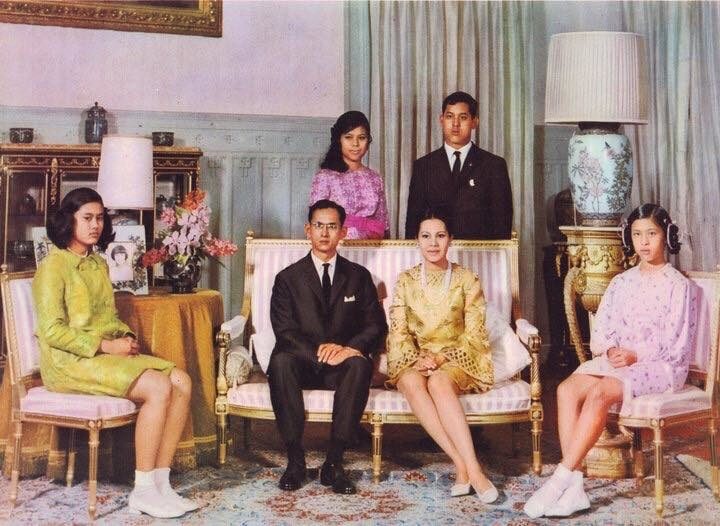
A quiet whisper of hope wafted through the villages and towns of Thailand as a royal advocate rose to make the voices of women and children heard. With a heart full of compassion, Queen Mother Sirikit recognized the challenges faced by many in an unequal society and made it her life's mission to open doors that were previously closed. Her commitment to strengthening the rights and opportunities of women and children was not just an act of kindness, but a deep-rooted belief that true strength of a nation lies in the empowerment of all its members.
In rural areas, where women often struggled with poverty and discrimination, her initiatives created new perspectives. Under the umbrella of the SUPPORT Foundation, she promoted craft skills such as silk weaving to enable women to be economically independent. These projects were more than just a means of livelihood - they gave women self-confidence and the opportunity to support their families. By providing access to markets and imparting skills, it helped to break down traditional role models and establish women as pillars of their communities.
Education was at the heart of their efforts, particularly when it came to children and young girls. She supported the construction of schools in remote regions to ensure that even the most remote communities had access to knowledge. Her efforts went beyond just infrastructure - she advocated for girls to have the same opportunities as boys to pursue their dreams. Through scholarships and programs specifically targeted to the needs of children, she laid the foundation for a generation that could look to the future with hope and confidence.
Health was another area in which she fought tirelessly for women and children. It promoted access to health care, particularly for mothers and their newborns, and supported initiatives aimed at improving living conditions in poor communities. Hospitals and clinics that sprung up under their auspices became refuges for many who otherwise would not have found help. Her commitment to the health of women and children was also evident in raising awareness of issues such as nutrition and prevention, thereby strengthening the well-being of entire families.
Beyond the material improvements, their influence was also felt on a cultural and social level. She used her position to raise awareness of women's rights and encourage society to overcome traditional prejudices. Her presence at events and her direct interaction with women and children in need sent a clear message: every person deserves respect and the chance for a better life. Her work laid the foundation for later advances in gender equality, as seen through laws and initiatives in Thailand today. For more information about current efforts to promote equality in Thailand, take a look at the website UN Women Thailand.
Their commitment also extended to protecting women and children from violence and exploitation. She advocated for refugee families, particularly women and children from neighboring countries such as Cambodia, who sought refuge in Thailand. Through her work with the Thai Red Cross, she ensured that these vulnerable groups found support and safety. Her care was like a protective cloak that enveloped the most vulnerable in society and showed them that they were not alone.
The paths she paved for women and children are still visible today in the many lives changed by her projects. Her legacy lives on in the women who now proudly support their families and in the children who, through education, can shape a future that once seemed unattainable. Their tireless efforts remain a shining example of how compassion and determination can transform a society for the better.
International recognition

From the golden temples of Bangkok to the splendid halls of international cities, the call of a woman whose devotion to humanity transcended boundaries resonated. Queen Mother Sirikit was not only revered as a symbol of kindness in Thailand, but also received worldwide recognition for her tireless humanitarian efforts. Her work, which spanned decades, earned her numerous awards and honors that underscored her extraordinary role as an advocate for the needy and a preserver of cultural values. Her influence radiated far beyond her country's borders and made her a valued figure on the global stage.
Her humanitarian projects, particularly her many years as honorary president of the Thai Red Cross since 1956, were internationally regarded as exemplary. She dedicated herself to supporting refugees, victims of natural disasters and the poorest communities, which earned her respect and admiration from international organizations. Her ability to provide prompt and effective assistance in times of crisis has often been highlighted as an example of compassionate leadership. These efforts were reflected in honors she received from various humanitarian institutions and cemented her reputation as a woman who dedicated her life to serving others.
Internationally, her elegance and commitment were appreciated at numerous state visits and social events in Europe and beyond. She accompanied King Bhumibol Adulyadej on many trips, during which she not only acted as a representative of Thailand, but also as an ambassador for cultural exchange and humanitarian values. Her presence at such occasions, often in traditional Thai clothing which she wore with grace, left a lasting impression and won her admiration among the international aristocracy. Her charisma and style were celebrated in prestigious magazines, and in 1965 Vanity Fair named her “Best Dressed Woman in the World” – a recognition that underlined her role as a global style icon.
Her efforts to promote Thai culture also received worldwide attention. By supporting crafts such as silk weaving and showcasing traditional customs on international stages, she helped bring Thailand's cultural heritage to a global audience. This work was appreciated by cultural organizations who recognized its role as a preserver and promoter of intangible cultural assets. Their initiatives, which often combined economic and cultural elements, were seen as a model for sustainable development that also attracted attention in other countries.
In addition to her cultural achievements, her commitment to women and children was recognized internationally. Her projects to strengthen the economic independence of women in rural areas and improve access to education and health care for children aligned with global goals of equality and development. Organizations that advocate for the rights of women and children saw her as an inspirational figure whose work made concrete improvements in the lives of many people. For further insight into her international impact and the recognition she received, see coverage from ZDFheute a valuable overview of her role as a global figure.
Her numerous awards and honors, both nationally and internationally, reflect the versatility of her work. She received orders and medals from various countries and institutions recognizing her contributions to humanitarian, cultural and social causes. These recognitions were not only a mark of appreciation for her work, but also a testament to how deeply her influence reached into the hearts of people worldwide. Her ability to combine compassion with elegance made her a figure to be remembered.
The global mourning following her death on October 24, 2025 shows how much she was valued beyond the borders of Thailand. From international leaders to ordinary people who benefited from her work, her legacy has been celebrated as a source of inspiration. Her humanitarian efforts and tireless commitment to the well-being of others remain a shining example of the power of compassion on a global scale.
Family life and personal values
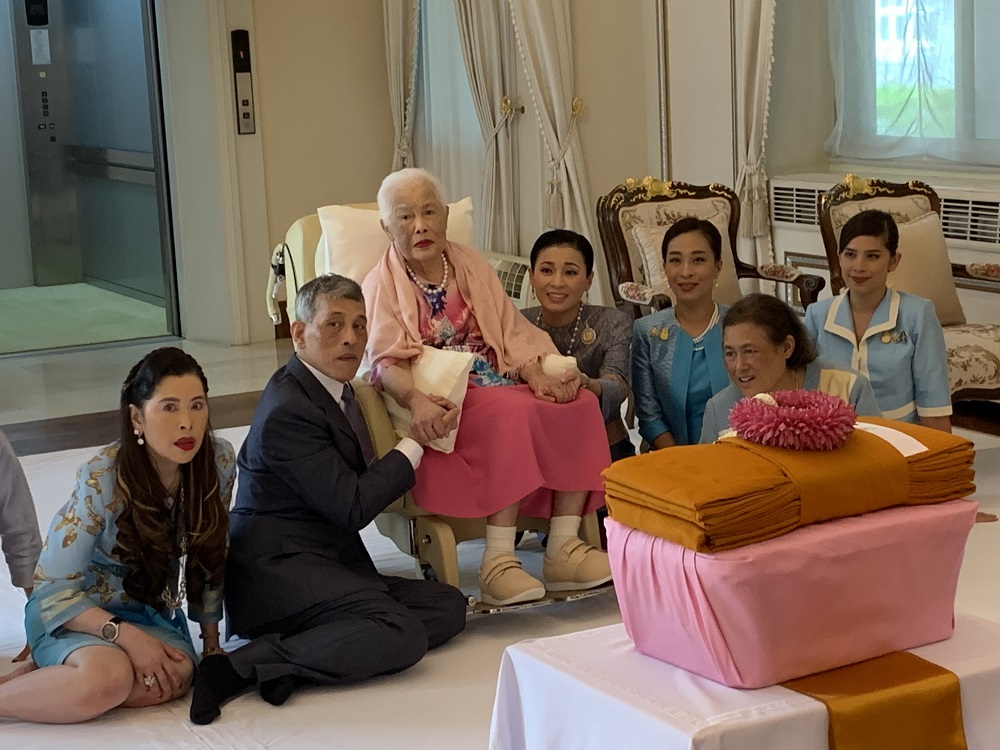
Beyond the lavish ceremonies and public appearances lay a life full of warmth and deep bonds, which Queen Mother Sirikit shaped with a quiet but powerful devotion. Behind the gates of the palace revealed a woman who lived the same values in her family and in her private environment that she represented so impressively in public. Her role as wife, mother and grandmother was as important as her royal duties, and she created a space where love, respect and tradition went hand in hand. This personal insight shows how deeply rooted her principles were, which she embedded both in her home and in Thai society.
Since her marriage to King Bhumibol Adulyadej on April 28, 1950, their partnership has been a foundation of strength and harmony. For six decades they stood side by side, not just as a ruling couple, but as companions who supported and inspired each other. Their close connection was evident in the way they overcame challenges together and worked for the well-being of their people. This deep bond was a role model for many and reflected their belief that unity and mutual care form the basis for a fulfilling life.
As a mother of four children, including the current King Vajiralongkorn (Rama X), and grandmother of twelve grandchildren, her home was a place of security and the transmission of values. She made it a point to instill in her children the importance of compassion, responsibility and respect for the traditions of Thailand. Her upbringing was characterized by a balance between royal discipline and maternal warmth, instilling not only a sense of duty but also humanity in her offspring. Her role as head of the family was characterized by a gentleness that remained noticeable even in the most severe moments.
Her love of music, which she discovered during her time studying in Paris, was a private retreat that also enriched her family. She composed songs for the palace band and shared this passion with her loved ones, keeping cultural values alive not only publicly but also in her closest circles. This creative side showed how important the beauty of art was to her, and she used it to create moments of joy and bonding with her family. Her ability to combine personal interests with family ties highlighted her versatility and pursuit of harmony.
In public life, she embodied values that came directly from her private environment: dedication, humility and an unwavering commitment to others. The warmth she expressed in her family also radiated in her encounters with the people, where she was often perceived as the mother of the nation. Her birthday on August 12, celebrated as Mother's Day in Thailand, was not only a national holiday but also a reflection of the care she gave to both her family and her country. For more details about her role as a mother figure and her personal charisma, see the reporting from ZDFheute a touching insight.
Even in her later years, when health challenges forced her to retreat from the public eye following a stroke in 2012, her presence in her family remained a source of strength. Although she was seen less often, her love and influence on her children and grandchildren was undiminished. She maintained her dignity and grace, even in quiet moments, and showed that true strength lies not in public visibility, but in inner fortitude.
The values of solidarity and compassion that she had so deeply internalized in her personal life permeated every facet of her actions. She was a woman who conveyed a message of love in every smile, every gesture and every quiet moment. These principles, which she lived in her family, became a guide for her work and left a mark that reaches far beyond the palace walls.
Legacy and influence on future generations
Like a gentle wind that sweeps across the rice fields of Thailand, carrying with it traces of times gone by, Queen Mother Sirikit's presence remains felt in the soul of the nation. Her departure on October 24, 2025 may mark the end of a chapter, but the legacy she leaves behind is a living fabric of compassion, culture and strength that extends far into the future. Her life's work, characterized by tireless commitment to her people, has not only shaped the present, but also paved a path that future generations will follow with pride and inspiration.
The legacy she created is evident in the numerous projects and initiatives that continue to bear fruit. The programs she founded to promote women's economic independence, such as the SUPPORT Foundation's support of silk weaving, continue to provide livelihoods for many families in rural areas. These sustainable approaches, which combine tradition with progress, are a testament to their foresight and will continue to empower women and communities in the years to come by giving them tools for self-determination and dignity.
On a cultural level, it has preserved a treasure that defines Thailand as a nation. Their efforts to promote crafts, festivals such as Songkran and Loy Krathong, and the beauty of Thai traditions have raised awareness of the country's cultural identity. Many of the cultural institutions and events she supports bear her name and serve as living reminders of her passion for her people's heritage. These values will continue to remain ingrained in the hearts of Thai people and act as a source of pride and unity.
Her humanitarian spirit, demonstrated in her work with the Thai Red Cross and in supporting refugees and those in need, has established a culture of care and compassion that will not easily fade. The hospitals, schools and community projects that emerged under her patronage are physical testaments to her dedication and will continue to save lives and create opportunities. Their example inspires organizations and individuals to stand up for the most vulnerable in society, shaping an attitude of solidarity that will endure for generations.
The values she embodied – unity, respect and unwavering devotion – are deeply rooted in Thai society and will serve as a moral compass for the future. Her influence, evident in the way she built bridges between tradition and modernity, offers guidance in a changing world. For a deeper insight into the meaning of such a lasting influence, it is worth looking at the definition and cultural context of “legacy”. Wikipedia, where the idea of a sustainable legacy is aptly described.
Her legacy also lives on in the stories and memories of the people she touched. From the villages where her projects brought hope to the international stages where she represented Thailand with grace, her name is inextricably linked to kindness and strength. These stories are passed down from generation to generation, inspiring young people who want to follow in their footsteps and carry on their vision of a better, united Thailand.
The traces of their work are like an inextinguishable light that illuminates the path for future leaders and communities. Their ability to combine social justice with cultural awareness remains a model for sustainable development and human connection. Their spirit will live on in every act of kindness, in every preserved custom, and in every step toward a more just society.
Mourning and remembrance
When the news of Queen Mother Sirikit's death echoed through the streets of Bangkok and the villages of Thailand on October 24, 2025, time seemed to stand still for a moment. A wave of grief swept the country as people from all walks of life paused to remember a woman who, for many, was far more than a royal figure - she was the "Mother of the Nation". The reaction of the Thai people showed deep reverence and gratitude for a life that touched so many hearts, while the international community also expressed its respect for an extraordinary personality.
In Thailand, thousands flocked to temples and public places to light candles, lay flowers and say prayers. Social media was abuzz with people sharing personal stories, from encounters with her during her visits to rural areas to stories of how her projects had changed the lives of entire families. Many wore black or white, traditional mourning colors, and their portraits, which hang in many homes and businesses, were decorated with floral wreaths. Her warmth and tireless commitment to the people were evident in every gesture of mourning as the country felt a deep emptiness.
The official statement from the royal family in Bangkok announcing her death caused a nationwide wave of consternation. King Maha Vajiralongkorn ordered a year-long national mourning, a sign of the deep meaning it had for the nation. This period of mourning not only reflects respect for her person, but also gives the people space to appreciate her achievements. Her birthday on August 12, traditionally celebrated as Mother's Day, was celebrated by many this year with particular melancholy as it now carries an additional layer of remembrance.
Her farewell also had a strong echo beyond the borders of Thailand. International leaders and royal families sent condolences expressing admiration for her humanitarian efforts and her role as an ambassador of Thai culture. Media outlets worldwide covered her life and achievements, often describing her as a symbol of grace and compassion. Her presence at international events and her work in interfaith dialogue and refugee aid during the Vietnam War were highlighted as examples of her global influence. For a comprehensive overview of the international response to her death, see the reporting from ZDFheute valuable insights.
The planned memorial events reflect the immense appreciation in which she is held. The royal family announced that her funeral will be held with the highest royal honors, a ritual that underscores the deep significance of her life for the monarchy and the people. These ceremonies, expected in the coming weeks and months, are expected to draw thousands of mourners wanting to pay their last respects. Temples and palaces become central sites of remembrance where traditional Buddhist rites are held to honor their souls and bless their passage.
Public memorials and events are also planned to give people the opportunity to mourn together and share their memories. Exhibitions about her life and works are organized in many cities, documenting her contributions to culture, social justice and humanitarian aid. These initiatives are intended not only to commemorate them, but also to keep their values alive by reminding younger generations of their vision of a united and compassionate Thailand.
The sadness felt both in Thailand and internationally shows how deeply she has touched people's hearts. Her ability to act as a mother figure to an entire nation while garnering respect around the world makes this loss a universal moment of reflection. As memorial services are prepared, the memory of her kindness and strength remains a source of comfort for many.
Sources
- https://en.wikipedia.org/wiki/Sirikit
- https://www.spiegel.de/panorama/leute/thailand-koeniginmutter-sirikit-im-alter-von-93-jahren-gestorben-a-b88abebe-86f5-4186-8ff6-73a42398e959
- https://www.bild.de/unterhaltung/royals-adel/thailand-koeniginmutter-sirikit-93-gestorben-68fc0387c008edcf0c852e88
- https://de.wikipedia.org/wiki/Kulturgut
- https://talkpal.ai/de/10-thailandische-traditionen-die-man-unbedingt-kennen-sollte/
- https://asiapacific.unwomen.org/en/countries/thailand
- https://www.boell.de/de/2023/06/01/die-zukunft-der-rechte-von-frauen-und-lgbtq-thailand
- https://www.zdfheute.de/politik/ausland/todesfall-sirikit-fruehere-koenigin-thailand-100.html
- https://de.m.wikipedia.org/wiki/Verm%C3%A4chtnis
- https://www.duden.de/rechtschreibung/Einfluss
- https://www.bluewin.ch/de/news/international/sie-galt-als-mutter-der-nation-nun-ist-sie-im-alter-von-93-jahren-gestorben-2932565.html

 Suche
Suche
 Mein Konto
Mein Konto
